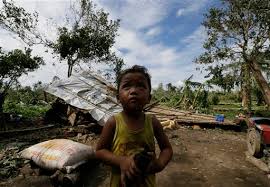Solar PV in Developing Countries
With the enforcement of the Paris Agreement a year after its adoption, countries are developing plans to implement their Nationally Determined Contributions (NDCs) to achieve their energy targets. Both energy efficiency and renewable energy initiatives are pivotal strategies of these NDCs, and will be fundamental to the ability of these countries to meet their commitments.
While developing countries are key to mitigating global carbon emissions, meeting the long-term goals set in the Paris Agreement represents an ambitious and strategic approach towards energy initiatives. According to the International Energy Agency, renewable energy activities from developing countries will have an overall reduction of 1.4 Gt in CO2 emissions by 20201. The fact that solar power is a locally available energy resource with minimum O&M cost makes this technology a fundamental ingredient in the energy mix of developing countries, when compared to other renewable energies.
represents an ambitious and strategic approach towards energy initiatives. According to the International Energy Agency, renewable energy activities from developing countries will have an overall reduction of 1.4 Gt in CO2 emissions by 20201. The fact that solar power is a locally available energy resource with minimum O&M cost makes this technology a fundamental ingredient in the energy mix of developing countries, when compared to other renewable energies.
Trends
Currently adopted in 46 developing countries, Feed-in tariff (FIT) policies are the most extended form of solar PV support2. This has been reflected in countries such as Algeria, which implemented a FIT in 2014 for both solar and wind projects; Costa Rica, which proposed new FIT rates for solar PV systems; and Ghana, which placed temporary caps on its FIT until upcoming solar PV projects can be assessed. Public finance mechanisms are also frequently used as platforms to stimulate the growth and investment of solar PV technologies. India, Mongolia, Jordan, El Salvador, and Pakistan are among the countries that added new policies, and extended existing policies in this regard3.
Tendering for solar projects has also gained momentum in recent years, with new record low bids below $0.03 per kWh in some markets4. Very low bids for solar PV projects in 2016, and early 2017, were achieved by developing economies such as India, Jordan, Argentina, Saudi Arabia, the UAE, and South Africa5. Additionally, Mongolia and Zambia saw record low national bids for winning tenders in 20166.
Regarding the manufacture of solar PV units, China dominated global shipments for eight consecutive years, throughout 20167. The top 10 manufacturers, of which a vast majority are China-based, accounted for about 50 percent of the shipments during 20168.
Expansion
Solar technology has been an emerging in developing countries, with Asia leading the way. To summarize:
- Asia Region (excluding Japan): Asia solar PV plants account for approximately 42 percent of the overall installed capacity9 of solar plants in the world. China is the leading generator in Asia, with 52 percent (8,548 MW) of the solar capacity installed in the region. India is second, with 2.3 MW, and Thailand follows, with 518 MW installed capacity. Kazakhstan, Pakistan, and the Philippines together account for 1 GW of solar PV energy10.
- South America Region: Solar energy is in its early stages in this region, as it accounts for only 2.3 percent of the worldwide installed capacity11. However, some countries, such as Peru, are focusing on extending solar installations throughout rural areas by subsidizing household connections for future solar PV systems. Also, two of the largest PV operative plants in South America can be found in Chile, in the Atacama Desert, with installed capacities of 100 MW and 246 MW, respectively.
- Africa Region: Solar PV installed capacity accounts for approximately 2.5 percent of the worldwide total12. However, the fact that Africa features the highest hours of sunlight per year (around 4,300, which equates to 97 percent of the possible total capacity13) gives solar energy the potential to be fitted in virtually any location in the continent, without the need of large-scale grid developments. South Africa is the leading country for solar PV in this region, with 1,243 MW of installed capacity, followed by Nigeria, with 976 MW, and Egypt, with 540 MW14.
 Although several challenges exist for the expansion of solar PV in developing countries - including the development of a transmission infrastructure network, and the inclusion of subsidies - the globalization of PV systems is now a reality. This is especially true in Asia, which accounts for a significant proportion of the worldwide installed capacity.
Although several challenges exist for the expansion of solar PV in developing countries - including the development of a transmission infrastructure network, and the inclusion of subsidies - the globalization of PV systems is now a reality. This is especially true in Asia, which accounts for a significant proportion of the worldwide installed capacity.
While solar energy development in off-grid and mini-grid solutions is often the most competitive solution in developing countries, major challenges exist. These include: complex financial and organizational questions; bottlenecks in the financing, management, business models, sustainable operations and maintenance; difficult local social and economic conditions.
Solutions to these challenges include: providing stand-alone solutions such as solar home systems with micro credits, or a fee for service; installing mini-grids via a different business model; using capital subsidies and cost recovery via tariffs.
Policy changes are yet another challenge developing countries must face, as most energy policies are short sighted. Another hindrance is that so many of these countries remain focused on grid extension, urban electrification, or large hydro, gas or coal power plants, with no long-term strategy for sustainability and supply. When demand outstrips supply, this approach is costly, resulting in power shortages and losses in the economic sector. This lack of planning illustrates how much diversified electricity generation capacities are needed, especially in rural areas, where the use of off-grid solar technologies can bring reliable electricity to the masses15.
 Originally from Spain, Gabriel Hurtado studied his MSc at Cranfield University & Imperial College of London. Since then, he has worked in many projects for several FTSE companies and public organizations and he has published energy articles in four UK Magazines, and in energy magazines in China, India and New Zealand. He has extensive experience in business development, project management and energy systems. He seeks to finely synchronize energy consultancy with energy systems and business development and being part of businesses that use technology to solve society's problems.
Originally from Spain, Gabriel Hurtado studied his MSc at Cranfield University & Imperial College of London. Since then, he has worked in many projects for several FTSE companies and public organizations and he has published energy articles in four UK Magazines, and in energy magazines in China, India and New Zealand. He has extensive experience in business development, project management and energy systems. He seeks to finely synchronize energy consultancy with energy systems and business development and being part of businesses that use technology to solve society's problems.
 Sasaenia Paul Oluwabunmi is a First Class graduate of Electronic/Electrical Engineering from Obafemi Awolowo University, Nigeria and has a Masters (Distinction Grade) in Energy Systems and Thermal Processes from Cranfield University, United Kingdom where he studied as an Exxon-Mobil international postgraduate scholar. He has experience in project management, energy finance and entrepreneurship. He is an Operations Officer at the OPEC Fund for International Development (OFID) and he manages a portfolio of developmental projects across multiple countries in the Asia continent.
Sasaenia Paul Oluwabunmi is a First Class graduate of Electronic/Electrical Engineering from Obafemi Awolowo University, Nigeria and has a Masters (Distinction Grade) in Energy Systems and Thermal Processes from Cranfield University, United Kingdom where he studied as an Exxon-Mobil international postgraduate scholar. He has experience in project management, energy finance and entrepreneurship. He is an Operations Officer at the OPEC Fund for International Development (OFID) and he manages a portfolio of developmental projects across multiple countries in the Asia continent.
1 International Energy Agency. (2015). World Energy Outlook 2015. Paris, France: International Energy Agency.
2 Renewable Energy Policy Network for the 21st Century. (2016). Policy Database.
3 Renewable Energy Policy Network for the 21st Century. (2016). Renewables 2016 Global Status Report.
4 Aberman, N. et al. (2015). Climate Change Adaptation Assets and Group-Based Approaches: Gendered Perceptions from Bangladesh, Ethiopia, Mali, and Kenya. International Food Policy Research Institute. Discussion Paper 01412.
5 Aberman, N. et al. (2015). Climate Change Adaptation Assets and Group-Based Approaches: Gendered Perceptions from Bangladesh, Ethiopia, Mali, and Kenya. International Food Policy Research Institute. Discussion Paper 01412.
6 Republic of Mali. (2012). Fourth general population and housing census (RGPH- 2009). Bamako, Mali: Republic of Mali
7 Aberman, N. et al. (2015). Climate Change Adaptation Assets and Group-Based Approaches: Gendered Perceptions from Bangladesh, Ethiopia, Mali, and Kenya. International Food Policy Research Institute. Discussion Paper 01412.
8 UN Women. (16 September 2015). In Mali, renewable energy boosts agricultural production
9 Snapshot of Global Photovoltaic Markets (2015). Photovoltaic Power Systems Programme. Report IEA PVPS T1-29:2016
10 Top 50 Solar Plants in Asia: The lands of rising solar (2017). Solarplaza.
11 Snapshot of Global Photovoltaic Markets (2015). Photovoltaic Power Systems Programme. Report IEA PVPS T1-29:2016
12 Snapshot of Global Photovoltaic Markets (2015). Photovoltaic Power Systems Programme. Report IEA PVPS T1-29:2016
13 Dunlop, S. (2008). A Dictionary of Weather. OUP Oxford. ISBN 9780191580055.
14 Top 50 Solar Plants in Africa: The lands of rising solar (2017). Solarplaza.
15 European Photvoltaic Industry Association (2011). Solar Photovoltaic Electricity Empowering the Word. Report Solar Generation VI.
Volume: 2017 November/December









.jpg?r=5339)
.gif?r=3655)

.jpg?r=2204)